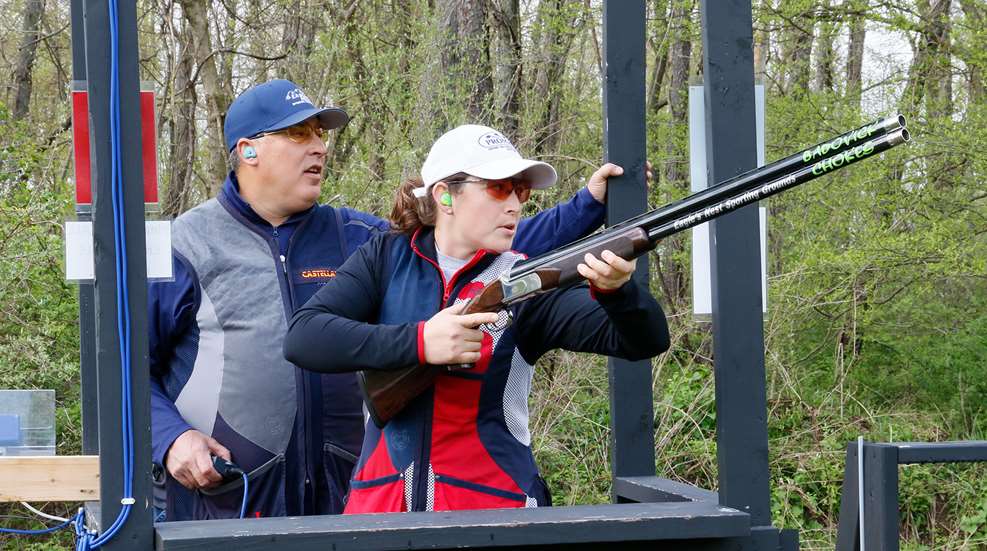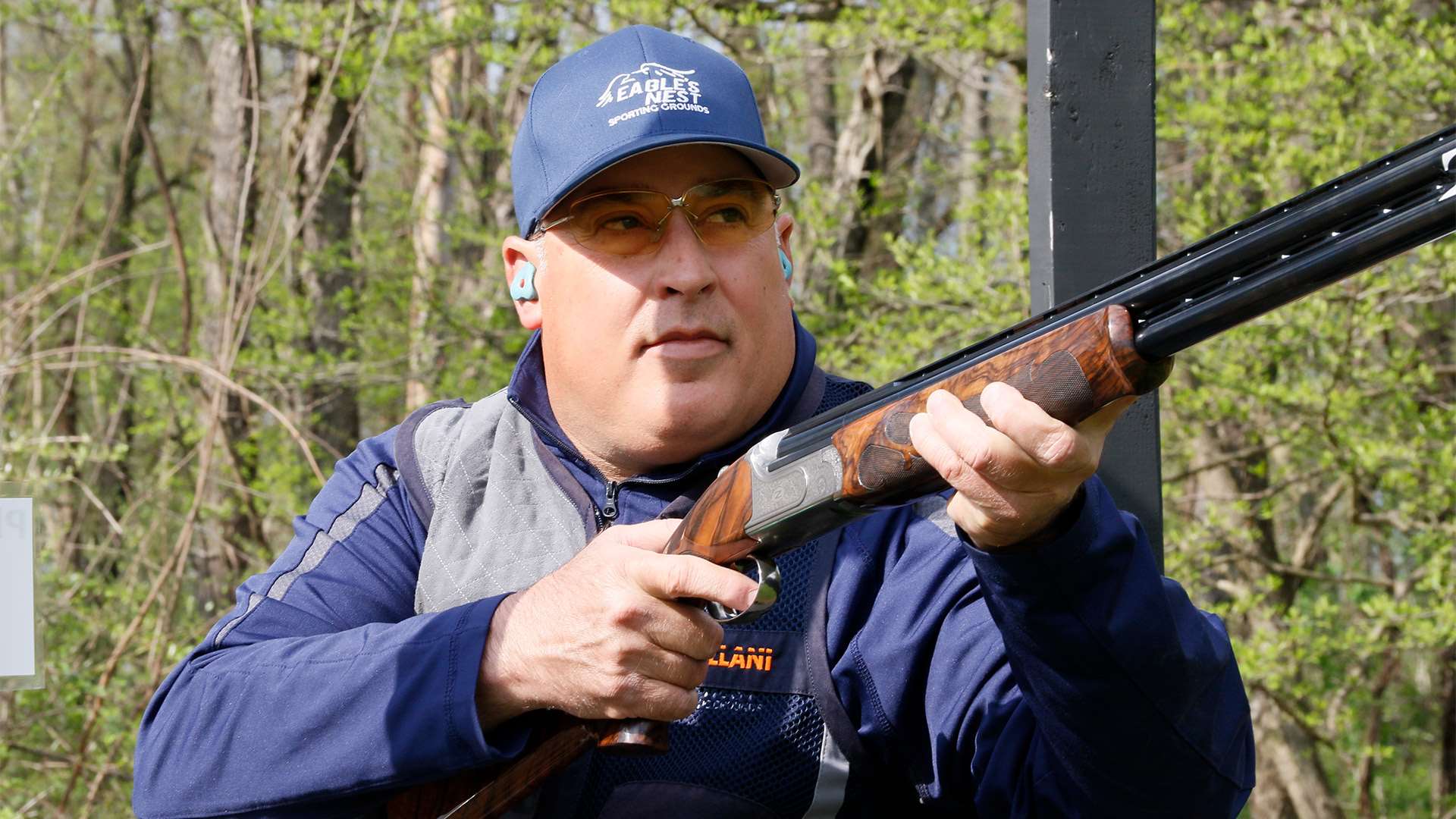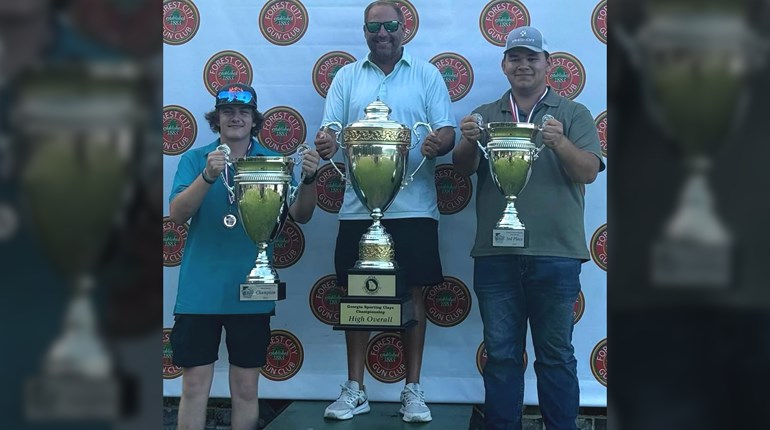
Shotgunning is both an art and a science, but if you are not connecting with clays, the sport can also be 100 percent frustrating. Like most shotgunners, I have difficulty consistently hitting targets at longer distances—30 yards and beyond. But, it wasn’t until recently that I learned it might be my method of shotgun shooting that is limiting my hits.
I shoot instinctively, which means I focus on the leading edge of a target, point (not aim) the shotgun at it, and slap the trigger. At relatively close shotgunning distances, this shooting method works well because your eyes, brain and body already know naturally how to hit a moving target. They work together instinctively to account for any required lead.
For instance, it’s similar to hitting a baseball with a bat. We don’t consciously think about how to hit the ball, we just do it. Another name for the Instinctive method of shotgun shooting is Intercept. Old-time grouse, woodcock and quail hunters called it snap-shooting.
To improve my shooting at distance I needed some help, so I contacted a local professional shotgun shooting instructor: Dan Bailey. No average shotgunner, Bailey is one of the top FITASC shooters in the country and has the trophy hardware to prove it. He is also the owner of Eagle’s Nest Sporting Grounds located in central Ohio, a members-only clays range specializing in sporting clays and FITASC (Fédération Internationale de Tir aux Armes Sportives de Chasse).
If you’re unfamiliar with FITASC, it’s the European version of American sporting clays that’s gaining popularity here in the states. The main difference between the two is that in the American version of the game shooters usually shoot pairs of targets at each shooting station (true pair, report pair, following pair), whereas in FITASC shooters shoot more single targets. But, the single targets in FITASC are thrown at greater distances than in sporting clays; 40 to 60 yards is not unusual, the shots often increasing to 70 or even 80 yards during professional competitions.

At the shooting station where my lesson began with Bailey, he first had me watch a clay target in flight and told me to imagine a clock face superimposed on the side of it. He then wanted to know where I would hold the muzzle of my shotgun before calling for the same target the next time. I pointed to a small pine tree, telling Bailey that I would hold there because that is where the target first became clear to my eyes. In other words, it was no longer a blur as it cleared the trap.
“Good,” he said. “Next, where on the target would you specifically focus your eyes? Since the target was a right to left crosser, I told him nine o’clock. “Try eight o’clock,” he said. “The target is starting to drop a bit by the time you will probably shoot.”
He was right, of course. I held my shotgun on the pine tree, called for the target, started my swing as soon as I saw the bird, focused on the target at eight o’clock, pulled the trigger and crushed the clay. An auspicious start.
“The hands always follow the eyes,” Bailey said. “In other words, if a shotgun fits you properly, and you mount it at the same place on your shoulder every time, the gun will shoot where your eyes are looking. You looked at eight o’clock and that’s where your shot hit.”
Bailey watched me shoot a few more targets—breaking some and missing a few—to get a sense of my Instinctive shooting style. We then moved on to the next station where he introduced the Maintained-Lead method, also known as Sustained-Lead.
“In Maintained-Lead, the muzzle of the gun always moves in front of the target,” Bailey said. “The muzzle is never behind or in line with the target. You focus on the target’s leading edge, looking specifically at the clock-face number that you predetermined when watching the ‘show bird.’ And when you’ve matched the speed of the target, pull the trigger.”
“The key is matching the speed of the target and keeping your swing ahead of the target at that constant speed,” continued Bailey. “If a target is thrown farther away from you, or flying fast, or both, your mind will automatically build in more lead. If the target is closer or flying slower, less lead. It comes down to trusting your mind and body as to when to pull the trigger. But, again, the key is always staying in front of the target and matching its speed. Do those two things and you can’t help but break it.”
Bailey added that although your eyes are always focused on the target, you should also see the muzzle of your shotgun at the bottom edge of your peripheral vision. The muzzle is your reference point as to whether or not you have matched the speed of the target. When you have, simply pull the trigger. Simple, right? Yes, but easier said than done.
“And, it doesn’t matter where along the flight path of the target you decide to shoot,” said Bailey. “If your muzzle is in front of the target, and you have matched the speed of the target, you will break it. You just have to learn to trust when the timing is right, and that takes practice.”
Bailey also mentioned that shooting a little low is better than shooting a little high. “Most shotguns shoot slightly high, about six inches or so; they were designed that way. So, if you happen to shoot a little low on a target you will likely still break it … a little too high, maybe not.”
And here’s another interesting tidbit. He said that clay-target machines, like people, are either right- or left-handed. “If right-handed, they’ll put a spin on targets that makes them tail off to the left, vice-versa for left-handed machines.” It’s knowing those types of little details that give a shooter a competitive edge.
Lastly, and not surprisingly, Dan Bailey recommends occasionally spending an hour or two with a reputable shooting instructor. Even if you are already an accomplished shotgunner, an instructor can provide helpful, personalized suggestions that will improve your shooting, as well as notice things you won’t on your own. In short, you can’t watch yourself shoot, and you don’t know what you don’t know.
“It’s unfortunate that new shooters don’t consider the cost of hiring a shooting instructor as an investment,” he said. “A good coach can get you shooting at a higher level sooner than you can do it on your own, likely years sooner. And even though a good instructor may charge $100 or more per hour, it’s still cheaper than spending big money on shotgun shells and clay targets to simply continue reinforcing your poor shooting habits.”
See more: How Much Do You Know About Annie Oakley?

































